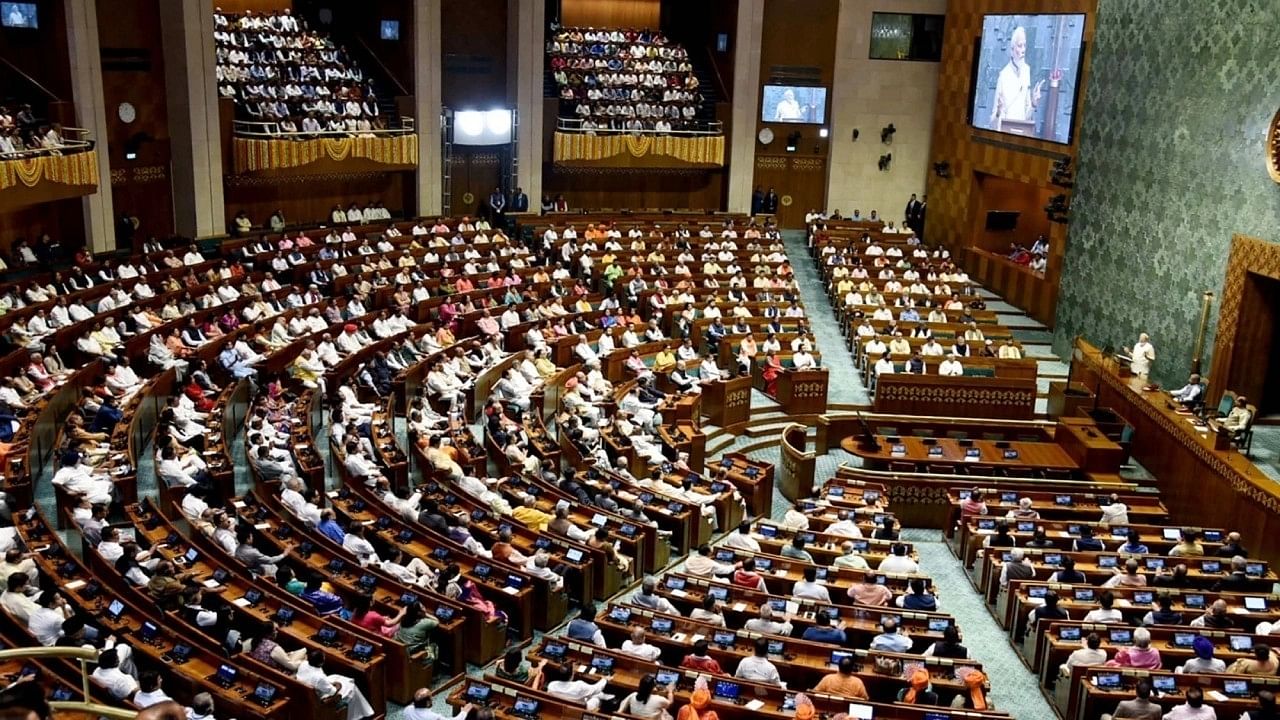
Representative image of a Lok Sabha session in process at the new Parliament building in New Delhi.
Credit: PIB Photo
New Delhi: Representation of women in national legislatures in India is among the lowest in the world with less than 15 per cent of members of the outgoing Lok Sabha being female even though their participation in voting has increased sharply in recent years, a report by SBI Research shows.
Among major economies, India has the highest population per seat of the lower house of parliament, however, it lacks in terms of representation of women in the national legislature.
In the outgoing 17th Lok Sabha in India, only 14.4 per cent of members are women, sharply lower than major economies. In Mexico, it is 48.2 per cent, France 39.7 per cent, Italy 35.7per cent, UK 32 per cent and Germany 30.9%, as per data analysed by SBI Research.
Countries such as Sweden & Norway, and South Africa have more than 45 per cent women representation in their national legislatures.
India’s neighbour Bangladesh has 21 per cent women in the national legislatures. The only major democratic economy that lags behind India in terms of women representation is Japan, where only 10 per cent of members in the national legislatures are female. Women’s representation in the US House of Representatives, the lower house of the United States Congress, stands at 23.6 per cent.
Poor representation of women in the Lok Sabha has been largely because of major political parties shying away from giving tickets to the fairer sex. In the 2019 election, only 12.6 per cent of the BJP candidates were women. For the Congress, it stood at 12.8 per cent. In terms of women contestants, All India Trinamool Congress fielded 37.1 per cent women candidates in the 2019 elections, the highest among the major political parties.
The proportion of women in the 18th Lok Sabha, for which the seven-phase polls begin on April 19, is unlikely to change substantially as major parties have shied away from giving tickets to women.
In the 2019 Lok Sabha elections, female voter turnout rates were higher than males. In absolute terms, the number of women exercising their franchise is likely to be at par with men in the ongoing Lok Sabha election, while in the 2029 election women voters are estimated to surpass males.
“In 2024, we project total voter turnout at the current rate of polling could touch 68 crore, of which women voters could be at 33 crore, around 49 per cent,” SBI Research said.
In 2029, we project total voter turnout at the current rate of polling could touch 73 crore, of which women voters at 37 crore could be outstripping registered men voters at 36 crore, it said.
SBI Research further projected that in 2047 (probable election year 2049), women voter turnout should increase to 55 per cent and men voter turnout might fall to 45 per cent. In 2047, it is projected that around 115 crore people will be registered electors with nearly the same proportion of men and women.
In 2047, voter turnout would be at 80 per cent i.e. around 92 crore people. Voter turnout will have more participation of women than men with 50.6 crore women, and 41.4 crore men signifying a tectonic shift of electoral participation in India, the report added.
According to the report, women are already wielding a more deciding factor in electoral outcomes in states like Kerala, Goa, Tamil Nadu, Andhra Pradesh, and Chhattisgarh. In the future, women are expected to be the deciding factor in electoral outcomes in Telangana, Himachal Pradesh, Karnataka, and Sikkim.
Out of the 23 major states, where state assembly elections took place in the last five years, women’s turnout was higher than that of men in 18 states. Interestingly, out of these 18 states, the same government was reelected in 10 states where women turnout was more than men.